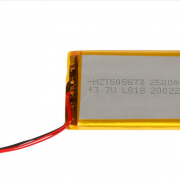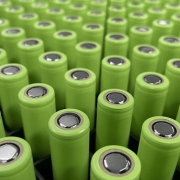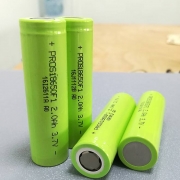How to choose a 32650 lifepo4 battery manufacturer in 6 steps?
Choosing a manufacturer for your 32650 lifepo4 battery can be daunting. Still, with little research and due diligence, you can find a reliable and trustworthy supplier for your needs. Here are some tips on how to choose a 32650 lifepo4 battery manufacturer.

Consider the quality of the products.
When looking for a battery supplier, it is essential to find a manufacturer with a proven track record of producing high-quality batteries that meet industry standards.
You can request samples or read customer reviews to better understand the manufacturer’s reputation. These extra steps can help you find a reliable source for your battery needs.
Look for a manufacturer with a good supply chain.
Finding a manufacturer with a good supply chain is critical for ensuring consistent and timely deliveries of your batteries. Good communication with your suppliers throughout the production process helps to ensure that expectations are met and that any issues can be quickly resolved.
Look for a supplier with a good track record who offers excellent customer service and can provide you with advance schedules and live video updates on the progress of your order.
Consider the manufacturer’s customer service.
Good customer service from a battery manufacturer is essential for the success of your business. An effective customer service team should be available to answer your questions and provide support and advice on any issues you may have with their products. A reliable battery supplier should understand that their customers need to know they can trust them and that they can resolve all issues quickly.
The proper battery manufacturer will go above and beyond to ensure the satisfaction of their customers. They should be available when needed, respond promptly, remain professional, explain things clearly and accurately, and take responsibility if something goes wrong. With an efficient customer service system, manufacturers can ensure their customers are happy with their products and services, leading to long-term loyalty.
Compare prices.
It is no secret that batteries cost has been rising in recent years. Finding an affordable battery manufacturer can be daunting, but ensuring you get quality products at reasonable prices is essential.
While purchasing batteries from manufacturers with meager prices may be tempting, proceed cautiously. Batteries are essential components to many devices and appliances and must be reliable and durable. Lower prices may indicate lower quality materials or manufacturing techniques, leading to decreased performance or shorter lifespan.
Buyers should always research before choosing a battery manufacturer, looking into reviews of past customers as well as certifications and overall quality assurance processes they have in place. Doing this will ensure your battery purchases are both reasonably priced and reliable for long-term use.
Check for certifications and accreditations.
When searching for a battery manufacturer, they must know about certifications they have received from reputable organizations. Organizations such as UL and CE are industry recognized and accept only the highest-quality products. A battery manufacturer that has been certified by either of these organizations is an indication of a reliable provider.
Certifications from UL or CE demonstrate the product’s safety, performance, and quality standards, meaning you can be sure that the batteries you purchase are safe and reliable. Furthermore, certification also shows that the company has met all legal requirements regarding production safety standards. With this in mind, seeking a supplier with UL or CE certification is worthwhile, as this will help ensure your products meet high industry standards.
Consider the manufacturer’s experience.
Any business owner purchasing batteries for their operation should consider the experience of the battery manufacturer. The battery industry is constantly changing and evolving, and the knowledge base of a long-standing battery manufacturer can prove invaluable. It’s essential to find a reliable source for your battery needs that can offer quality products at an affordable price.
A battery manufacturer with a long history in the industry will have more expertise and resources than one that has recently entered the market. They’ll be able to provide higher quality products and better customer service, technical support, warranties, and after-sales services.
Additionally, these manufacturers often have an extensive network of dealers who can provide easier access to parts and accessories and advice on properly using and maintaining your batteries. This assistance can save you time and money when deciding what type or size of the battery is right for your needs.
In conclusion
Considering these factors, you can narrow down your options and find a 32650 lifepo4 battery manufacturer that meets your needs and budget. Be bold and ask questions, and do your research to ensure you’re getting the best possible product for your needs.















